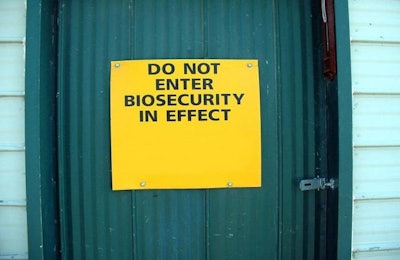
Robots and other autonomous technology can reduce the number of workers entering a poultry house, which improves biosecurity and lessens the risk of disease spread between flocks, explained Colin Usher, senior research scientist and interim branch chief for the robotics branch in the Intelligent Sustainable Technologies Division at the Georgia Tech Research Institute.
Currently, equipment assessments and monitoring for flock health and welfare is largely a manual process.
“Commercial houses are large, labor-intensive farms that have lots of chickens in them. They require farmers to walk through on a daily basis,” Usher said during the 2022 Georgia Precision Poultry Farming Conference.
“While they’re doing this, they’re also performing qualitative analysis by listening to the birds and looking at how they’re moving around. They’re making judgements on the status of their flocks and that leads to the decisions and things they can do for their flocks and in their houses.”
Minimizing disease spread
However, one of the primary vectors of disease spread – such as the current avian influenza outbreak in the U.S. – is people entering and exiting poultry houses.
One of the main focus points for current poultry robotics research in the U.S. is to find ways to reduce or even eliminate the need for farmers and farmhands to enter these environments, noted Usher.
“It will probably never get down to zero interactions in the near future, but what can you do to minimize the need for farmers to enter houses,” he added.
Modern robot technology can monitor bird welfare, health and environmental parameters in the house, while still keeping the facility biosecure and safe from disease. In addition, this can free up human workers for other tasks, while converting the real-time data about a poultry flock into actionable insights for farmers.
Newer models are even able to manipulate the environment, including picking up floor eggs or mortality.
“We feel very strongly that in order to really be attractive as a solution to work in poultry houses and on poultry farms, the robot needs to do something to reduce the need for that persons need to go into that house,” said Usher.
To learn more about HPAI cases in North American commercial poultry flocks, see an interactive map on WATTPoultry.com.
Read our ongoing coverage of the global avian influenza outbreak.


















